It was December 1965 and the crews of Gemini 6 and 7 had just completed the first rendezvous between two spacecraft, a critical step on the way to the Moon. Shortly after the two spacecraft separated, the following exchange took place among Walter M. “Wally” Schirra and Thomas P. Stafford aboard Gemini 6, Frank Borman and James A. Lovell aboard Gemini 7 and Elliott M. See as the Capsule Communicator (Capcom) in Mission Control in Houston:
Gemini 6: We have an object. It looks like a satellite going from north to south, up in a polar orbit. He’s in a very low trajectory, traveling from north to south. It has a very high [fineness] ratio. It looks like it might be [inaudible]. It’s very low; it looks like he might be going to re-enter soon. Stand by, One. It looks like he’s trying to signal us. [Stafford and Schirra play “Jingle Bells”].
Gemini 7: We got him, too! [Laughter].
Gemini 6: That was live, Seven, not taped.
Houston: You’re too much, Six.
If you listen to the audio of the conversation, you can hear the sounds of an 8-note Hohner “Little Lady” harmonica and a handful of small bells, the first musical instruments played in outer space. Both are on display at the Smithsonian Institution’s National Air and Space Museum in Washington, DC.
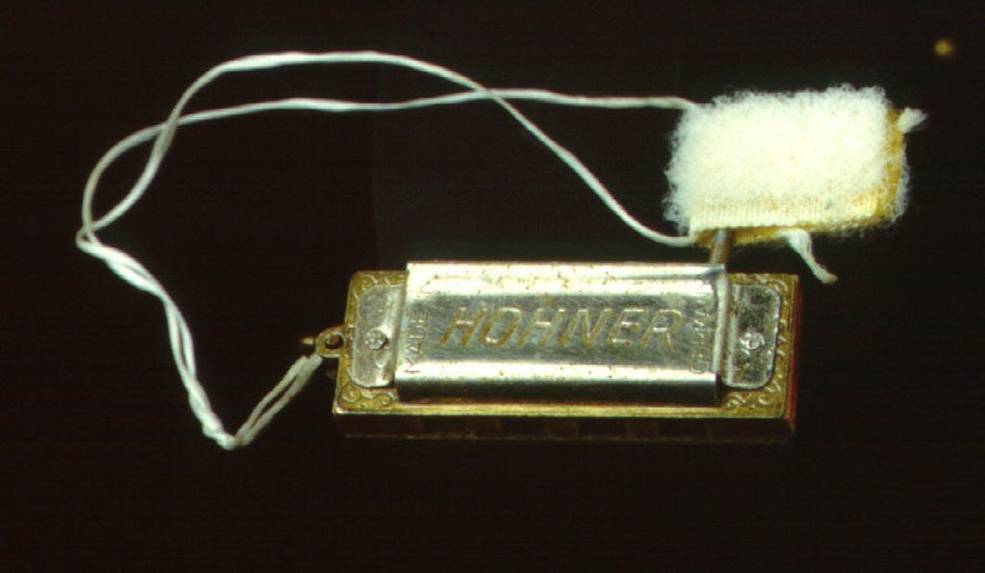
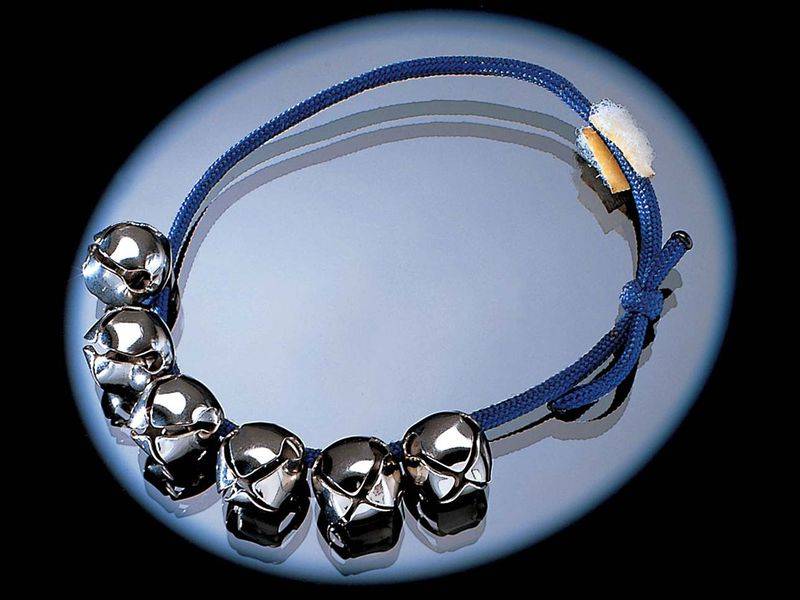
The first musical instruments played in space: a Hohner harmonica (left) and a set of bells (right). Credits: NASM.
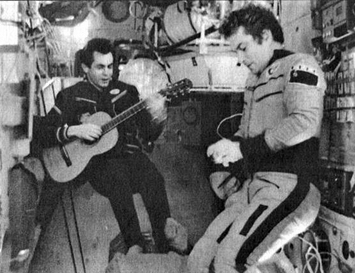
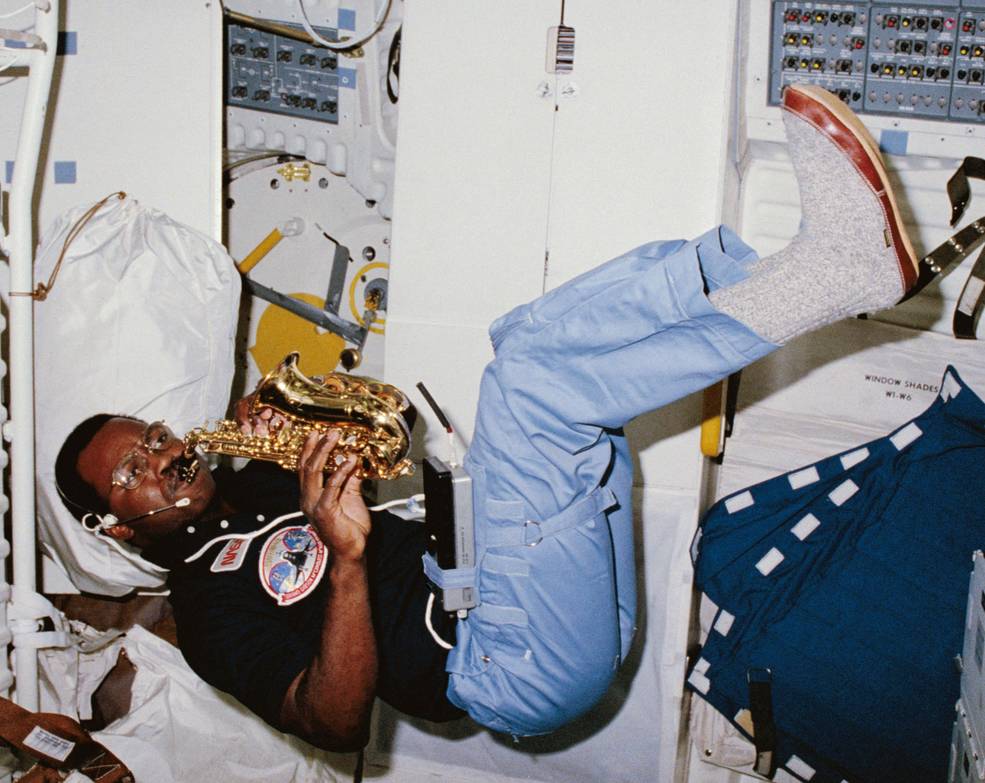
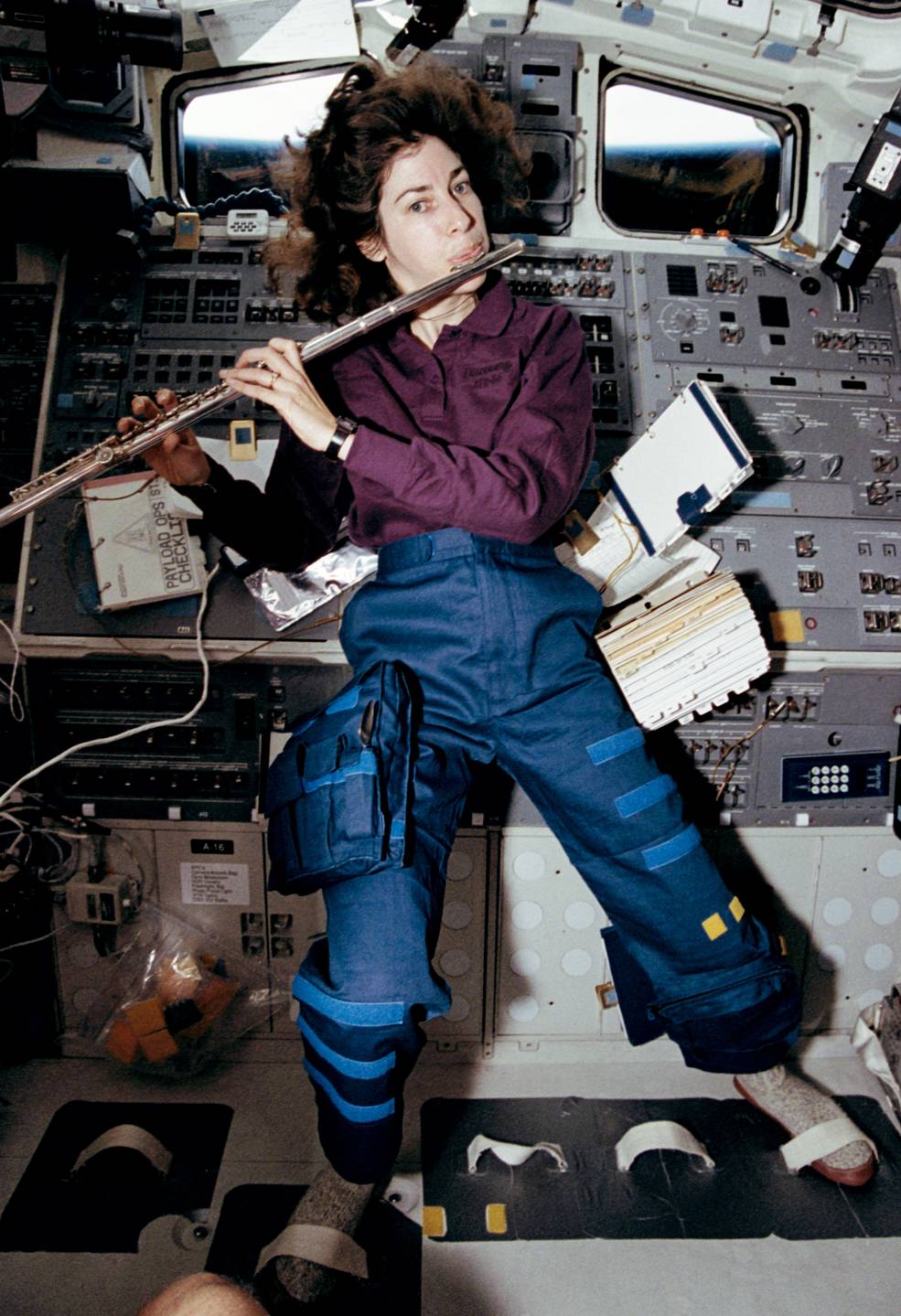
Left: Ivanchenko plays the acoustic guitar aboard Salyut-6. Middle: McNair on the soprano sax in Challenger’s middeck. Right: Flautist Ochoa on Discovery’s flight deck.
As spacecraft grew larger and missions longer, the size and sophistication of musical instruments in orbit increased. Many astronauts and cosmonauts were accomplished musicians and brought their talents to orbit. Although the music from the instruments sounded the same in space as on the ground, playing them in weightlessness provided the musicians with challenges unique to each instrument. The first acoustic guitar in space is believed to have been aboard the Soviet Salyut-6 space station, first played by Aleksandr I. Ivanchenko in 1978. Guitars have provided musical psychological support for crewmembers aboard space stations ever since. Ronald A. McNair played a soprano saxophone during Space Shuttle Challenger’s STS-41B mission in 1984. Space limitations in the Shuttle precluded flying McNair’s favorite tenor sax, so he learned to play the smaller version of the instrument for his space flight. Once on orbit, McNair encountered unexpected effects of weightlessness: the water that normally accumulates inside wind instruments on Earth resulted instead in unwanted bubbly effects. The Shuttle cabin’s dry air had unwanted effects on the instrument’s felt and leather pads, requiring several minutes of “rehydration” before proper playing. Ellen L. Ochoa had to use foot restraints while she played her flute aboard Discovery during STS-56 in 1993 as part of an education demonstration. The small air current coming from the flute exerted enough force to impart translation motions on her.
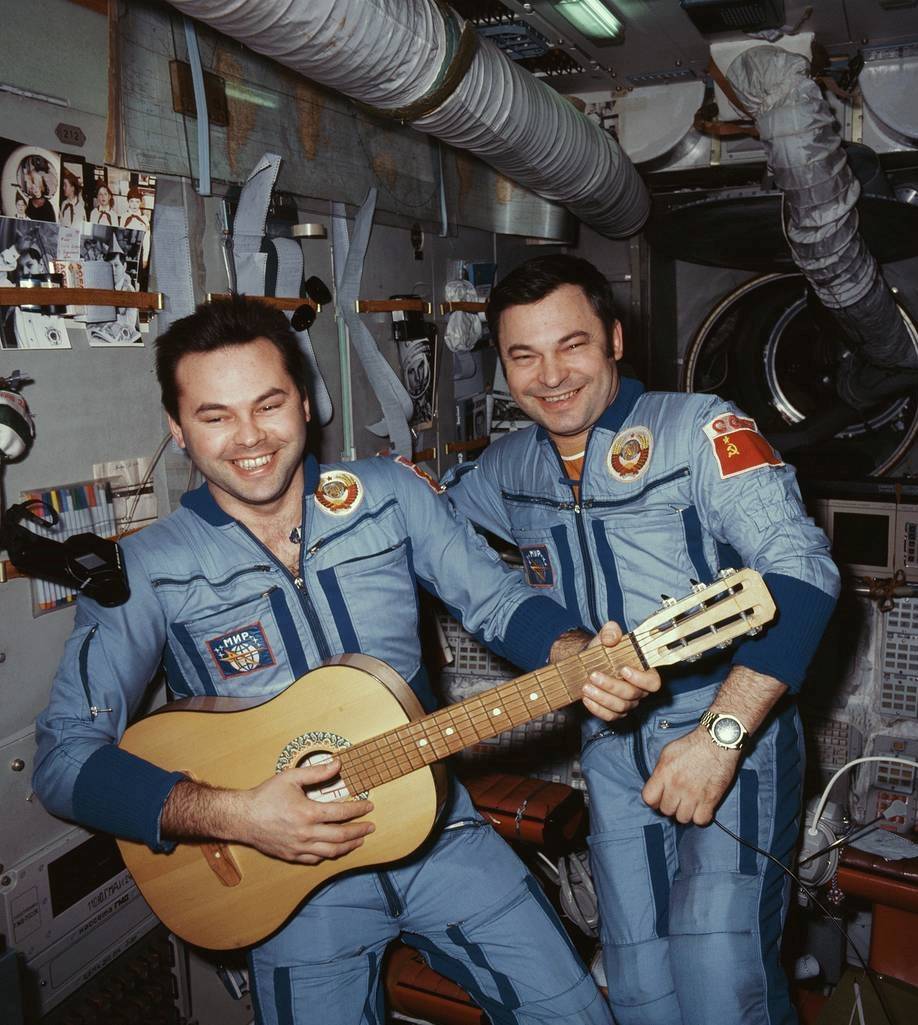
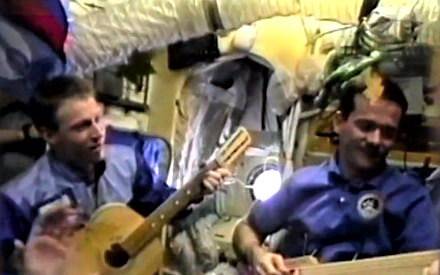
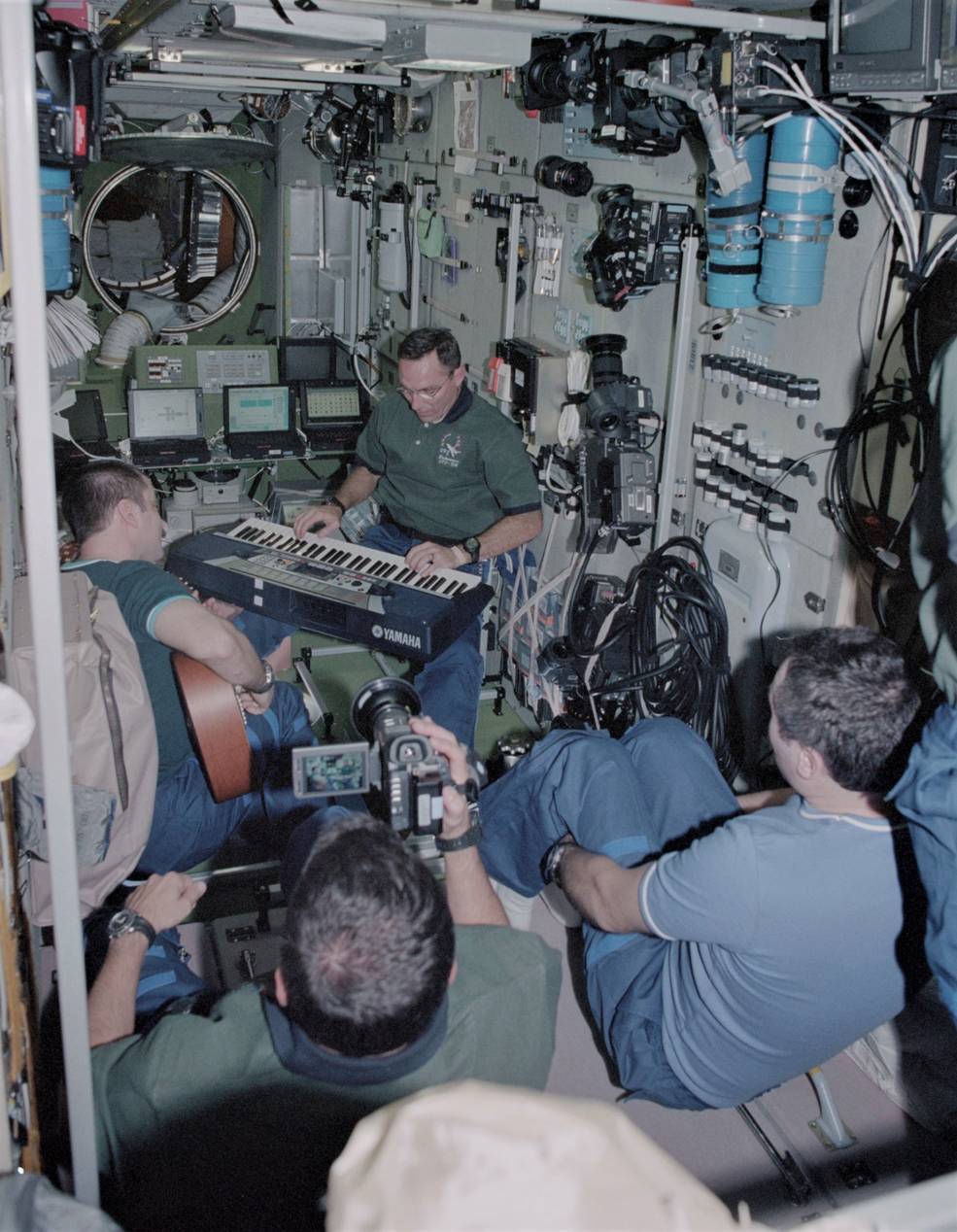
Left: Laveykin (left) and Romanenko during Mir Expedition 2 in 1987. Middle: Reiter (left) and Hadfield aboard Mir during the STS-74 mission in 1995. Right: Tyurin (left) on guitar and Walz on keyboard in the Zvezda module during the STS-108 mission in 2002.
Russian space psychologists realized that playing music on orbit improved the well-being of cosmonauts on long-duration missions and ensured that an acoustic guitar made it aboard Mir as early as possible. Cosmonauts Yuri V. Romanenko and Aleksandr I. Laveykin enjoyed strumming the strings during Mir’s second expedition in 1987, as did many cosmonauts throughout the space station’s lifetime. During STS-74, the second Shuttle-Mir docking mission in 1995, Canadian astronaut Chris A. Hadfield brought along a specially modified collapsible SoloEtte guitar that he donated to the Mir 20 crew onboard at the time, after recording a duet with European Space Agency (ESA) astronaut Thomas A. Reiter. The guitar stayed on Mir until June 1998, when it returned to Earth on STS-91 after 942 days in space. Following the example set aboard Mir, psychologists concerned with the well-being of crewmembers aboard the International Space Station (ISS) included musical instruments as part of the overall support program. The August 2001 STS-105 mission, in addition to launching the Expedition 3 crew, brought the first musical instrument, an acoustic guitar, to ISS. An electronic keyboard accompanied the Expedition 4 crew to orbit in December of that year aboard STS-108. Expedition 3 Flight Engineer Mikhail V. Tyurin and Expedition 4 Flight Engineer Carl E. Walz played an impromptu concert for their crewmates.
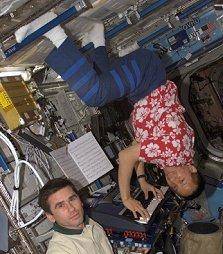
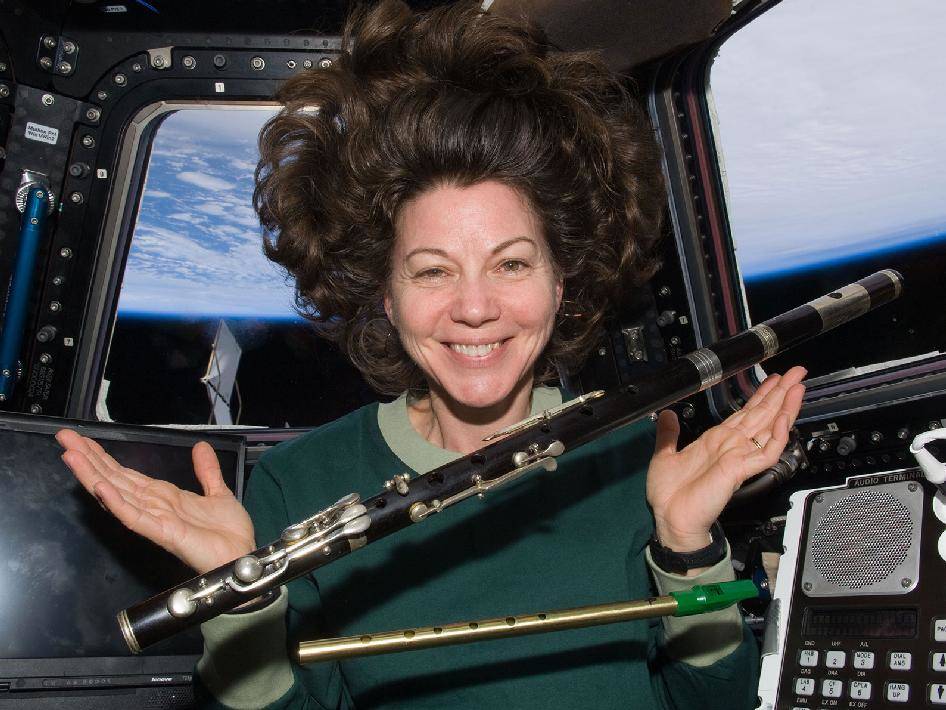
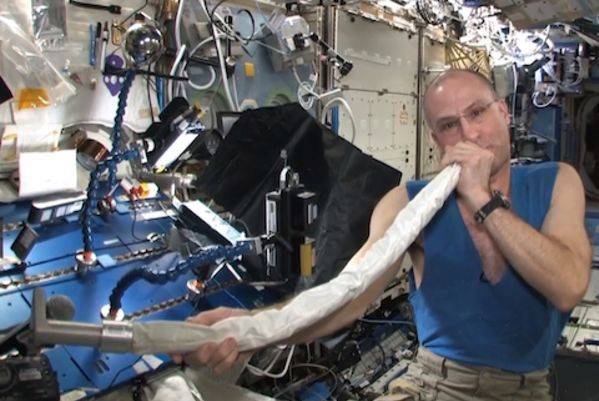
Left: Lu (right) playing the keyboard. Middle: Coleman with two of the four flutes she brought to ISS. Right: Pettit playing his home-made didgeridoo.
Many crewmembers on ISS enjoy playing the instruments already provided; others bring their own that suit their playing habits best; others still make their own while on-orbit. Edward T. “Ed” Lu during Expedition 7 in 2003 provided his own rendition of Ludwig van Beethoven’s Moonlight Sonata on the ISS electronic keyboard. Astronaut and flautist Catherine G. “Cady” Coleman brought four flutes to ISS during Expedition 26 and 27. In 2011, she played a duet with Ian Anderson, flautist and frontman for Jethro Tull, she aboard ISS and he on Earth while on tour in Perm, Russia. As one of his private science experiments, during Expedition 30/31 in 2012 Donald R. Pettit built a didgeridoo, an Australian aborigine wind instrument, from a vacuum cleaner hose and with the help of Daniel C. Burbank demonstrated how the sound waves emanating from the end of the instrument disturb droplets of water.
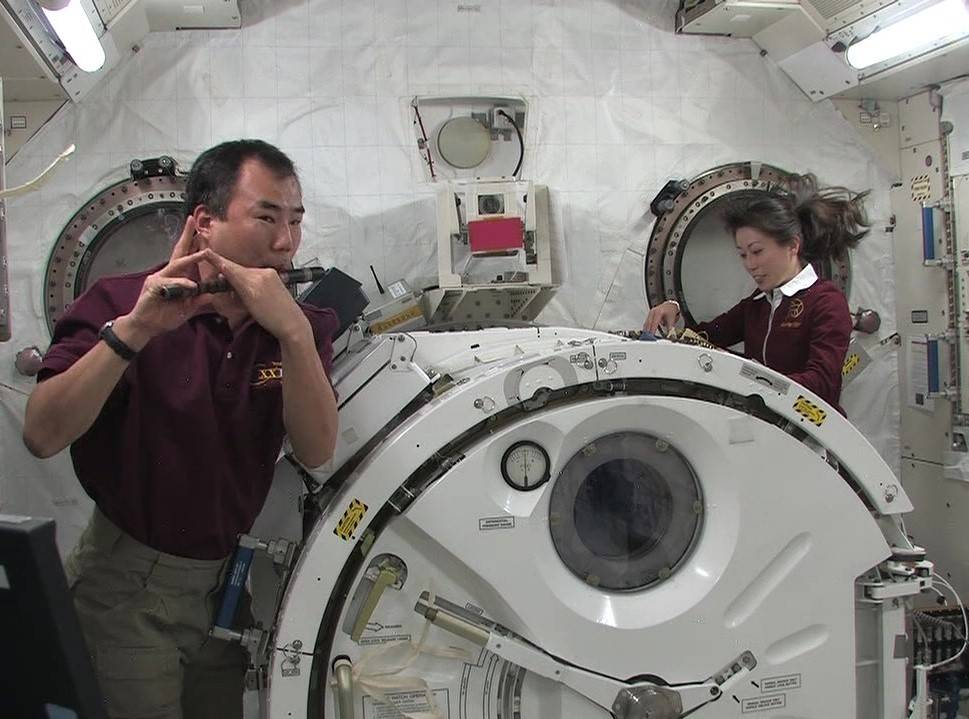
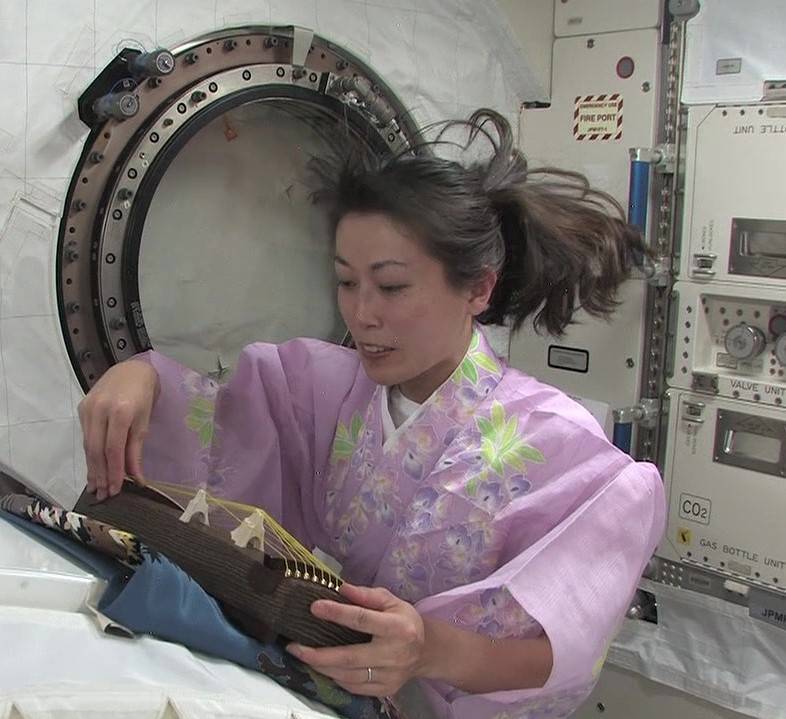
Left: Noguchi (left) playing the ryuteki and Yamazaki playing the koto in the Kibo module.
Marking the first time that two astronauts from the Japan Aerospace Exploration Agency (JAXA) met in space, in April 2010 Expedition 23 Flight Engineer Soichi Noguchi and STS-131 Mission Specialist Naoko Yamazaki performed a musical duet of the traditional Japanese song Sakura, Sakura (Cherry Blossoms), using the JAXA Kibo module’s airlock as a stage. Noguchi opened the performance on the ryuteki (a bamboo flute) he had brought along for his 5.5-month mission, then switched to the electronic keyboard to accompany Yamazaki playing on a koto. Normally six-feet long, Yamazaki had a miniature version of the stringed instrument made for her spaceflight, which changed the quality of its sound.
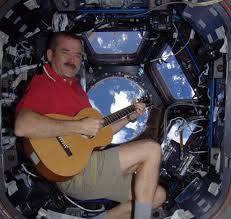
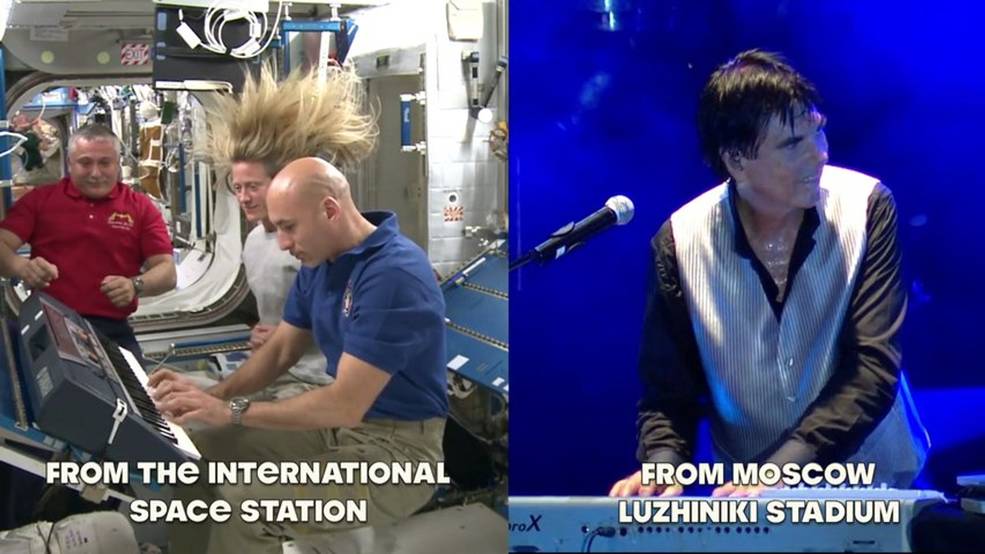
Left: Hadfield strumming the guitar in the Cupola. Right: Composite of Parmitano on keyboard on ISS (left) and Marouani on keyboard in Moscow.
Shortly before returning from his six-month Expedition 34/35 in 2013, Hadfield recorded his version of David Bowie’s 1969 hit Space Oddity. He announced this first-ever video shot on ISS on Twitter and posted it on Youtube where it has received more than 45 million views. Responding on social media, Bowie called Hadfield’s cover “possibly the most poignant version of the song ever created.”
On June 29, 2013, one month into his 6-month mission as Expedition 36/37 Flight Engineer, ESA astronaut Luca S. Parmitano took part in a concert by French musician Didier Marouani and his band spAce playing in Moscow’s Luzhniki Stadium. Watched by fellow crewmembers Fyodor N. Yurchikhin and Karen L. Nyberg, Parmitano played the ISS electronic keyboard while the band, including Yurchikhin’s 11-year-old daughter Elena as a guest performer, played the song Magic Fly.
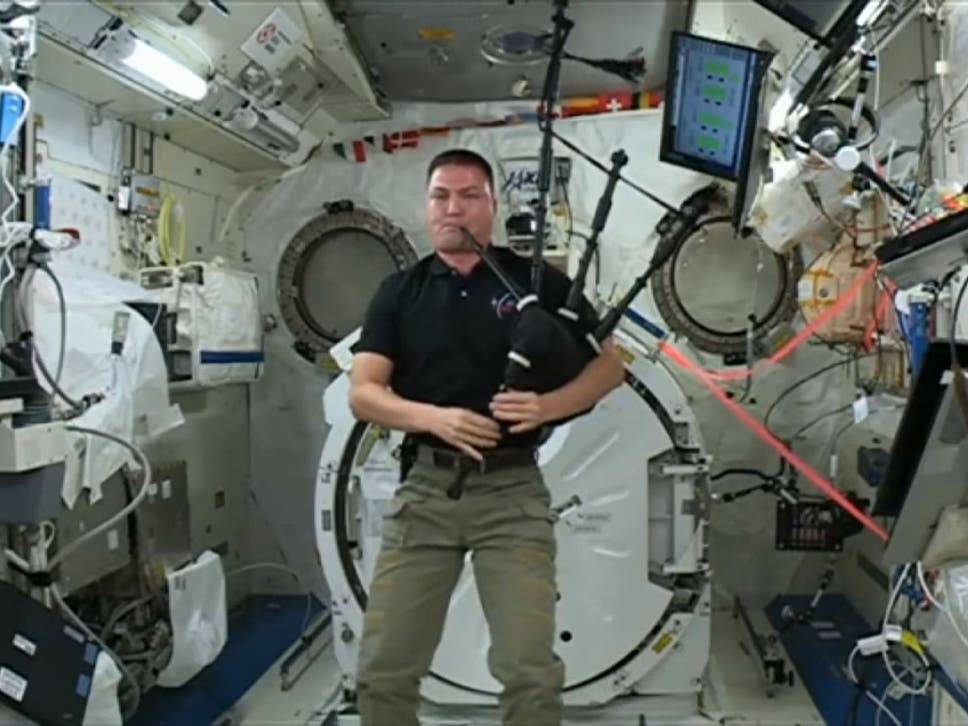
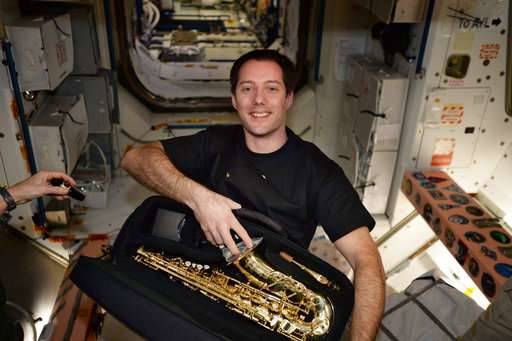
Left: Lindgren plays the bagpipe in the Kibo module. Right: Pesquet with his birthday present alto sax.
The honor of being the first to play bagpipes in space belongs to NASA astronaut Kjell N. Lindgren. In November 2015 during Expedition 45, Lindgren played Amazing Grace on the pipes custom made for him by McCallum Bagpipes in Scotland to pay tribute to his friend research scientist Victor W. Hurst who had suddenly passed away.
For his 39th birthday in 2017, ESA astronaut Thomas G. Pesquet’s Expedition 50 crewmates surprised him with an alto saxophone that they had conspired to be delivered to ISS and had somehow managed to keep hidden from him. The sax remains onboard ISS to this day and astronauts occasionally take it out for a spin.
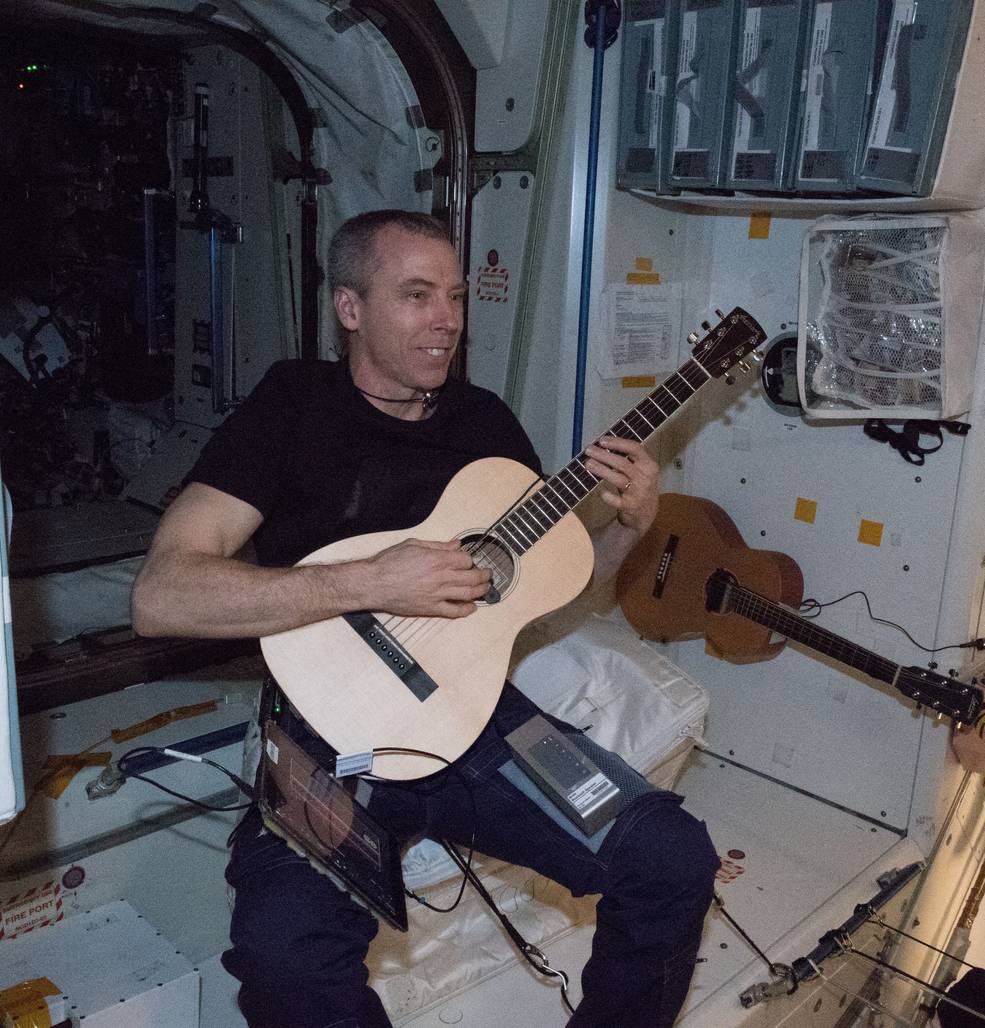
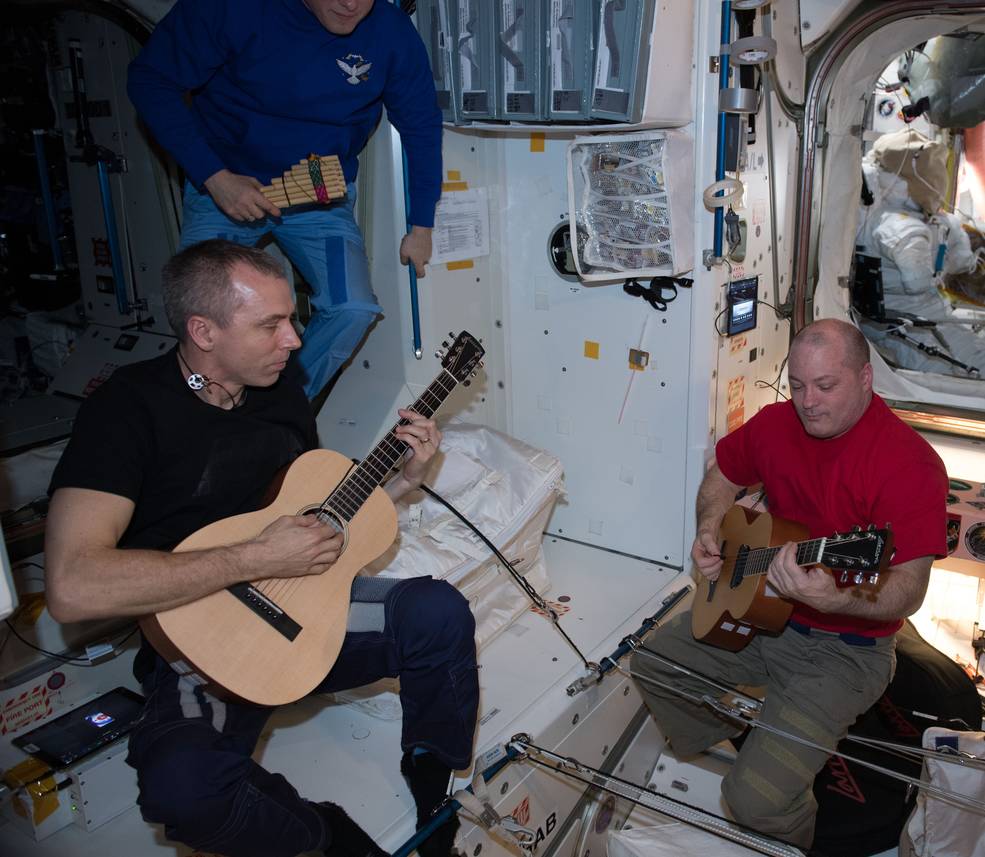
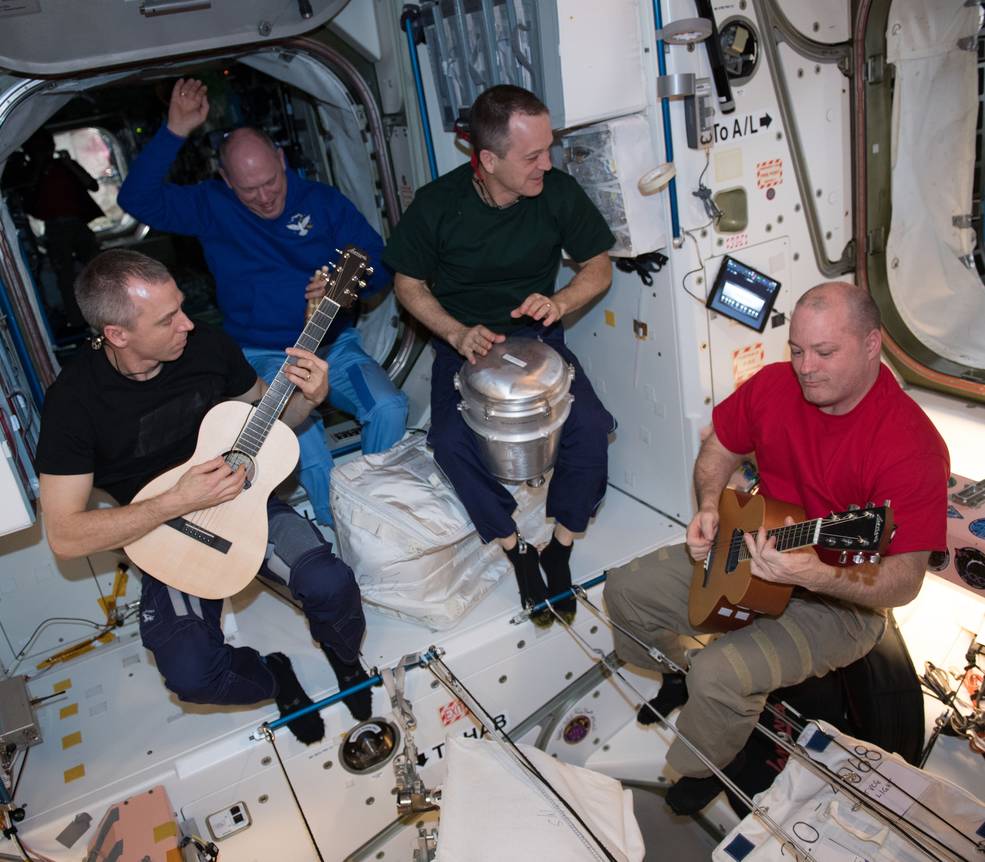
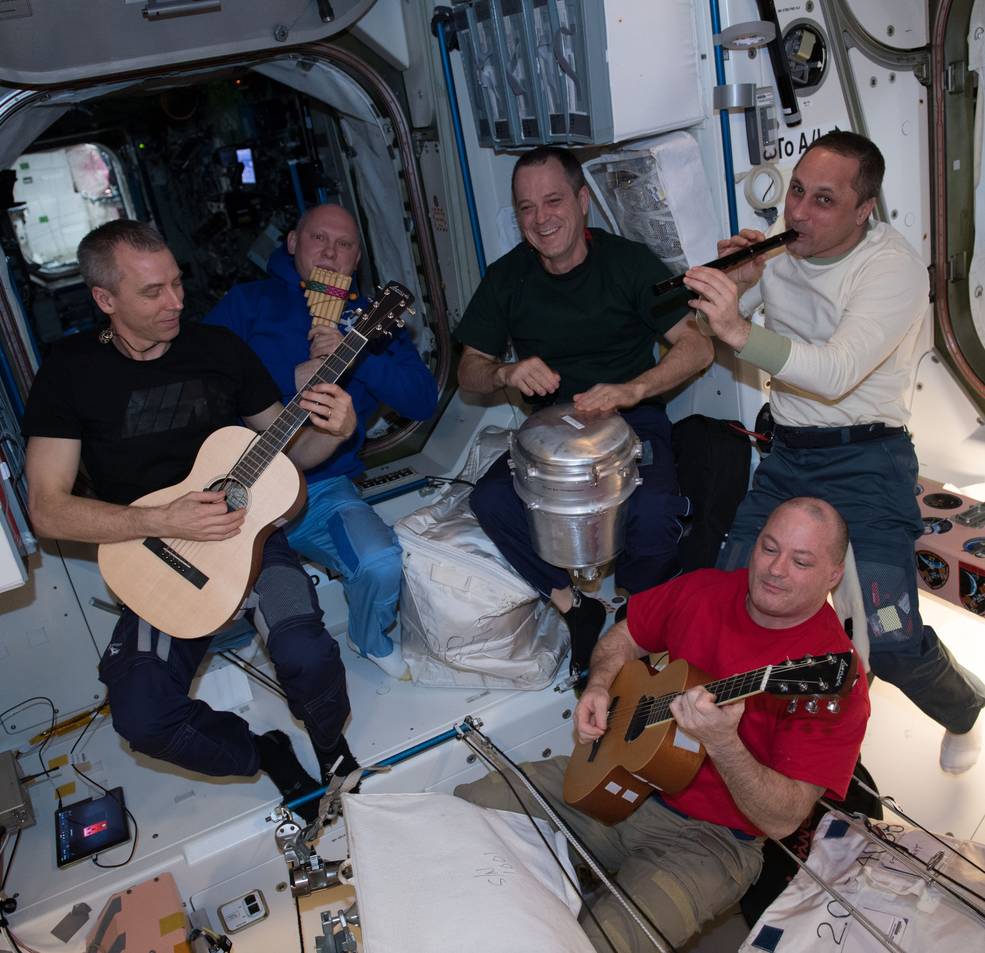
A jam session comes together on ISS. Far right: AstroHawaii jamming session aboard ISS (left to right) Feustel, Artemyev, Arnold, Shkaplerov and Tingle.
What do you get when you put several musicians in a room together with an array of instruments? A jam session. True even on ISS. Calling themselves AstroHawaii, in April 2018 the crew of Expedition 55 took a break from their regular work to hold a zero-g jam session, with NASA astronauts Andrew J. “Drew” Feustel and Scott D. “Maker” Tingle on guitars, Russian cosmonauts Oleg G. Artemyev on the pan flute and Anton N. Shkaplerov on the Irish flute and NASA astronaut Richard R. “Ricky” Arnold on the drum (actually a Russian KTO solid waste container). No recording is known to exist of this epic jam session.
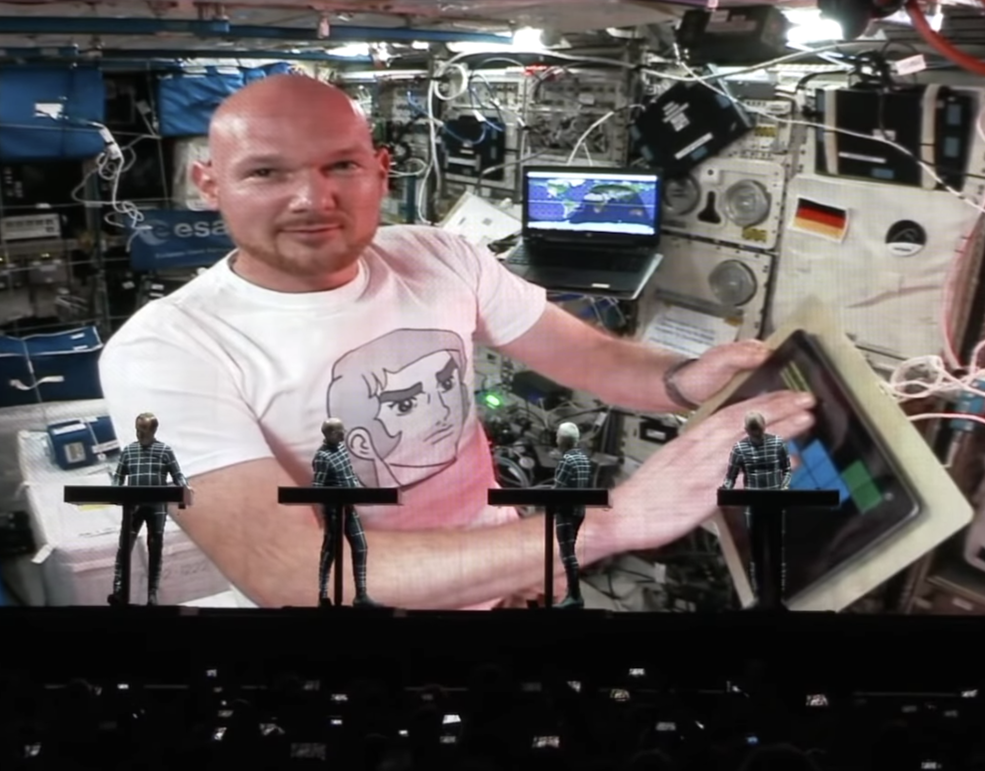
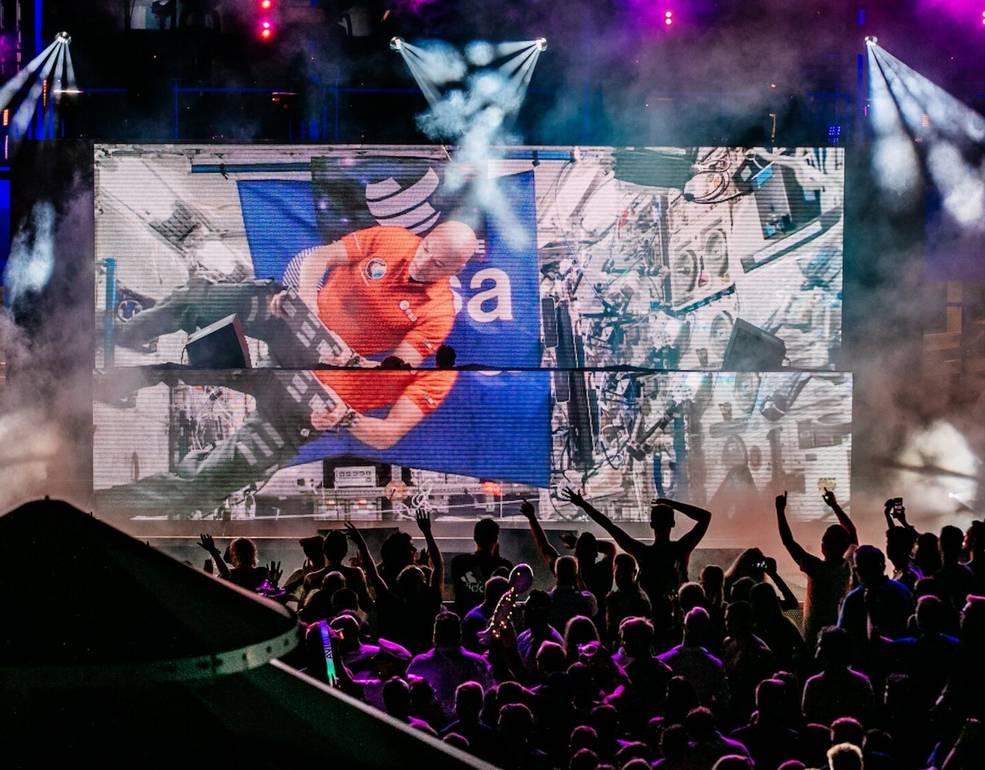
Left: Gerst playing his iPad, projected behind Kraftwerk in Stuttgart. Right: Parmitano projected onto a large screen as he DJs a cruise ship party.
Expedition 56 Flight Engineer ESA astronaut Alexander Gerst took music on ISS to nerd level off-scale high. In July 2018, Gerst participated in a concert taking place in Stuttgart, Germany, with pioneering electronic band Kraftwerk. Jamming live on their 1978 song Spacelab, Gerst used an iPad loaded with a touch control app backed by synthesizer software, configured by Kraftwerk’s Henning Schmitz and coordinated with ESA who manifested the iPad on a SpaceX cargo vehicle.
Kicking it up another notch, Parmitano became the first person to DJ a party from space. In August 2019 during Expedition 60, using the name DJ Astro Luca, he played a 12-minute set from ESA’s Columbus module using an iPad loaded with DJ software to 3,000 party-goers on a cruise ship anchored at the Spanish island of Ibiza in the Mediterranean Sea.
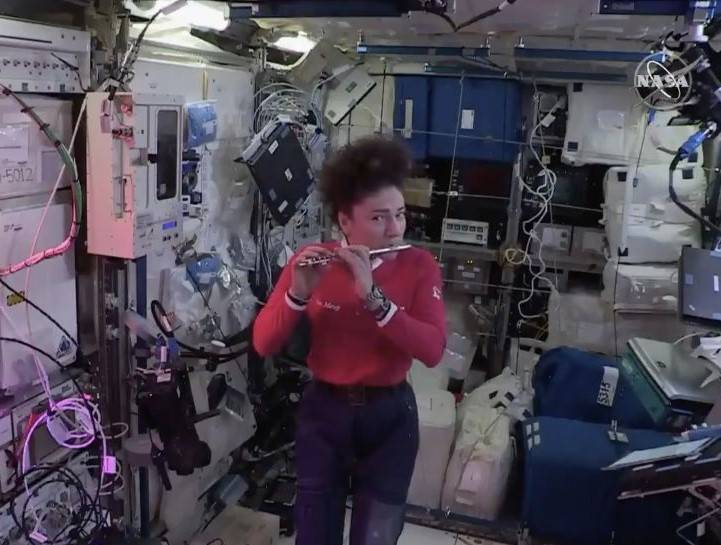
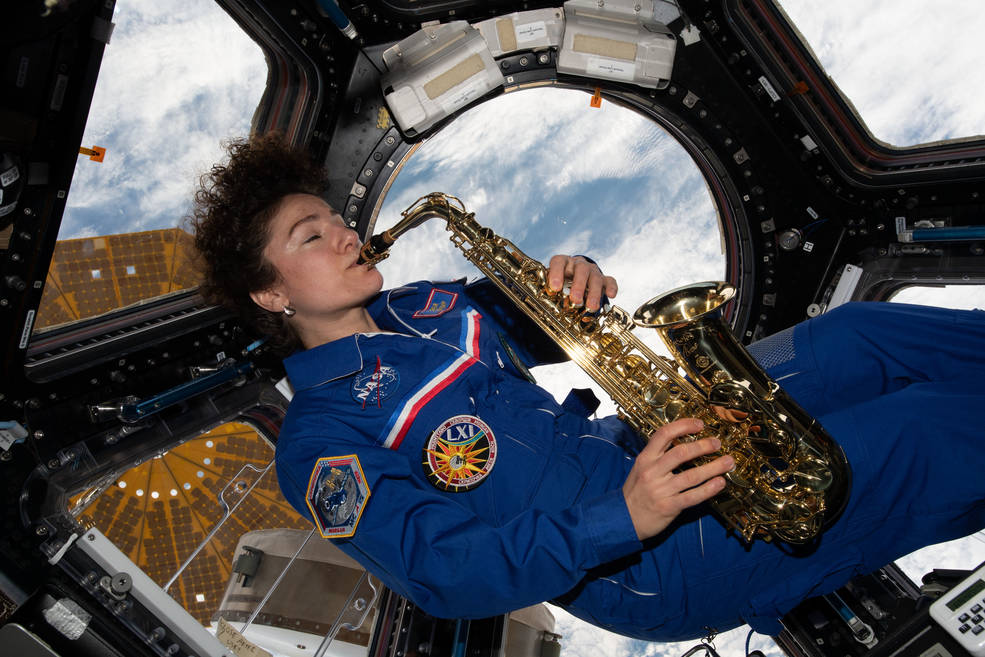
Left: Meir playing her high school piccolo. Right: Meir on sax in the Cupola.
During a TV hookup with school kids from her hometown of Caribou, Maine, in November 2019 Expedition 61 Flight Engineer Jessica U. Meir played the Star Wars theme on her high school band piccolo. In addition to piccolo, Meir also played flute and saxophone as a child, so it was only natural she would take the alto sax on ISS out for a spin before returning to Earth in April 2020.
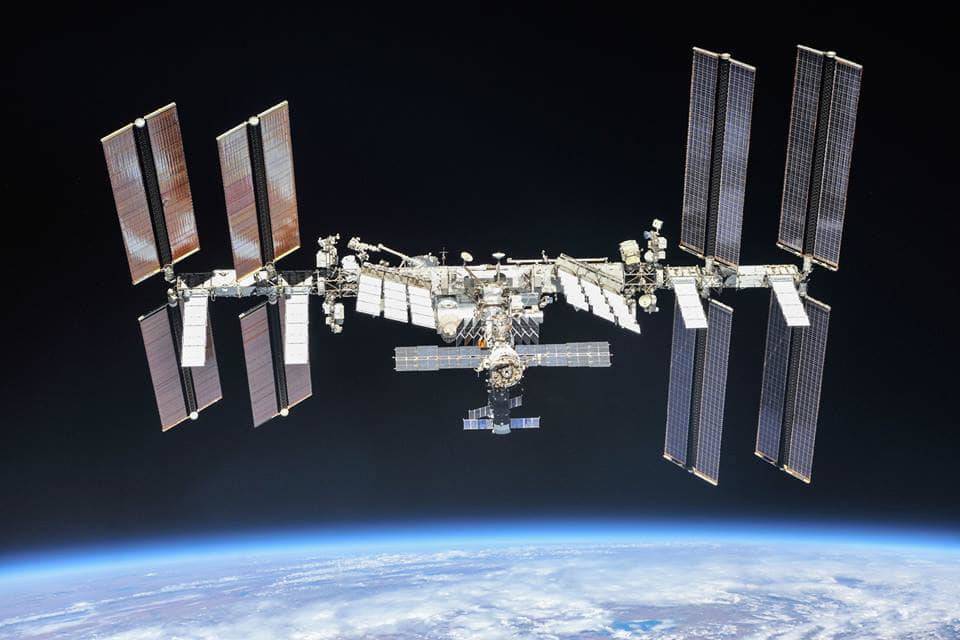
ISS – taking music to new heights.




























